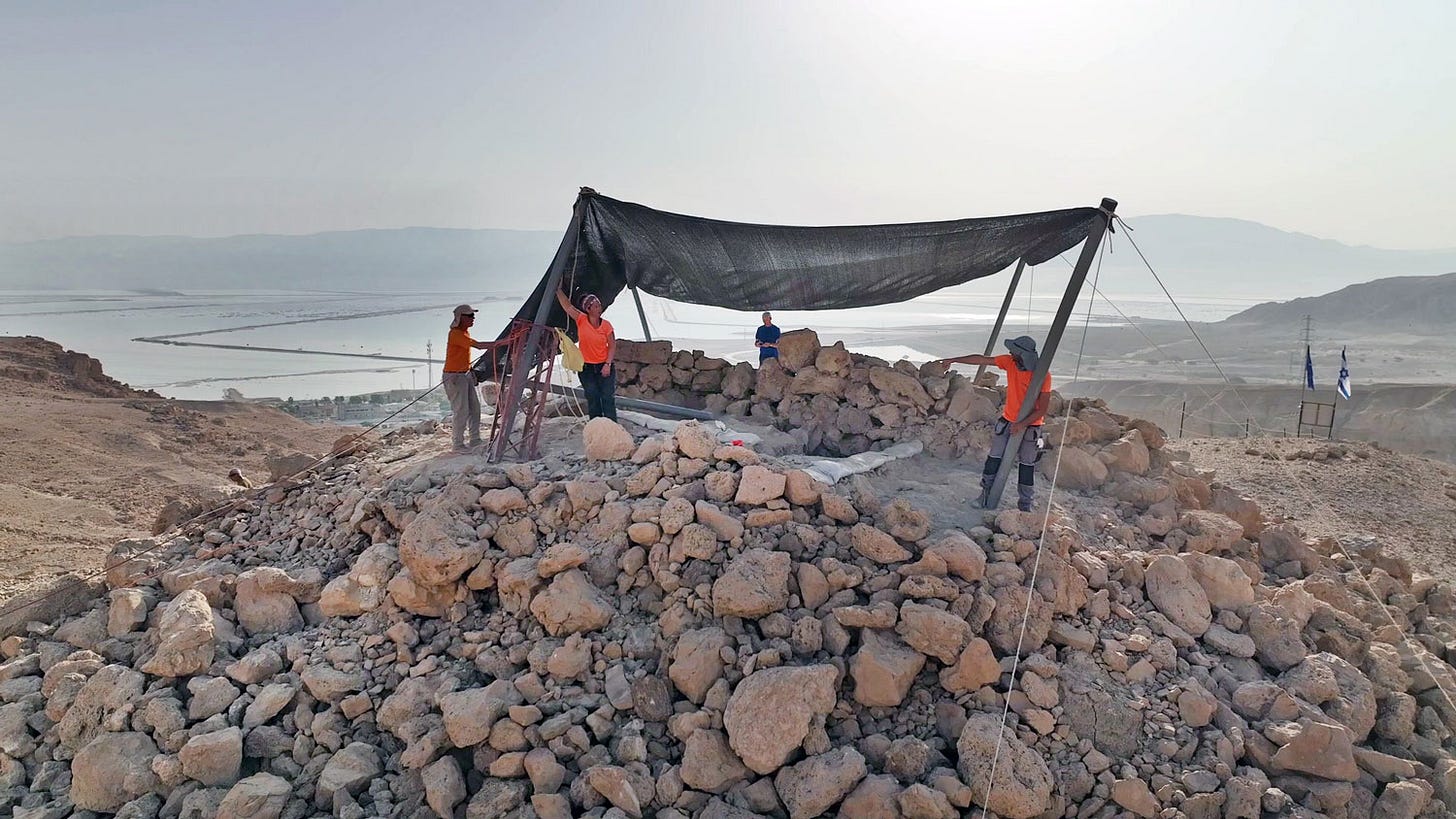🧐 Ancient Beat #150: Female scribes, artistic kiddos, and newly discovered pyramids
Hello all — welcome to issue #150 of Ancient Beat! Here’s the latest ancient news. 👇
🗞 Ancient News: Top 5
2,200-Year-Old Pyramid Discovered In Judean Desert — Archaeologists working near the ancient fortress of Hyrcania in the Judean Desert have uncovered a 2,200-year-old stepped pyramid structure atop a burial chamber. Likely dating to the Hasmonean period (2nd century BCE), the pyramid measures about 32 feet tall and was built with white ashlar limestone blocks. The monument capped a shaft leading to a rock-cut burial chamber that had been looted in antiquity. Inscriptions on nearby mosaic floors mention the names of two prominent Jewish figures from the 1st century CE, suggesting the site was in use for generations. Ceramic finds span from the Hellenistic through the Byzantine period, hinting at continuous activity in the area.
Children's Role in Upper Paleolithic Cave Art — Recent research suggests that children actively participated in creating Upper Paleolithic cave art, challenging the notion that such artworks were solely the domain of adults. Evidence indicates that children's involvement was not merely imitative but integral to the cultural and spiritual practices of their communities. This participation underscores a society where age did not limit spiritual significance, and the contributions of youth were valued in forging connections with the divine.
Rethinking the Dawn of Agriculture: Human Agency in the Neolithic Transition — Recent research challenges traditional views that attribute the Neolithic transition primarily to environmental factors. A study introduces a mathematical model emphasizing the role of human demographic interactions—such as migration, competition, and cultural exchange—between early farmers and indigenous hunter-gatherers in the spread of agricultural practices. Genetic evidence supports this, revealing significant levels of hunter-gatherer ancestry in early farming communities, suggesting prolonged periods of coexistence and integration. These findings highlight human agency as a central factor in the shift from hunter-gatherer societies to agrarian lifestyles.
The Hidden Hand of Medieval Female Scribes — A study analyzing 23,774 manuscript colophons from 800 to 1626 CE found that at least 1.1% were copied by female scribes, amounting to over 110,000 texts, with approximately 8,000 still existing. The research indicates a consistent, though small, presence of female scribes until 1400, followed by a notable increase in manuscripts written in local languages after that period. These findings suggest the existence of unidentified women's scribal communities and highlight the need for further exploration into the socio-political and economic contexts that supported female manuscript production.
Archaeology Breakthrough as Neanderthal-Like Stone Tools Discovered in China Could Reshape Human History — Archaeologists in southwestern China have unearthed stone tools dating back 50,000 to 60,000 years, exhibiting Quina technology previously associated only with Neanderthals in Europe. This discovery challenges the notion that such technological advancements were exclusive to Europe and suggests a more complex narrative of human evolution in East Asia. The tools, including distinctive Quina scrapers, indicate sophisticated behaviors and cultural exchanges among ancient human populations in the region.
That’s it for the free Top 5! If you’re a free subscriber, sign up for the paid plan for another 28 discoveries covering Trojan wine, Green Sahara, ancient rituals, divine instruments, and a whole lot more.
Until next time, thanks for joining me!
-James
Twitter: @jamesofthedrum
P.S. Here’s my Buy Me A Coffee link if you’d like to support my efforts with a donation.
P.P.S. If you want access to the paid version but it’s a little too steep for you right now, just email me — I want this to be accessible.
P.P.P.S. Paid members, read on!
🗞 Ancient News: Deep Dive
Keep reading with a 7-day free trial
Subscribe to Ancient Beat to keep reading this post and get 7 days of free access to the full post archives.


